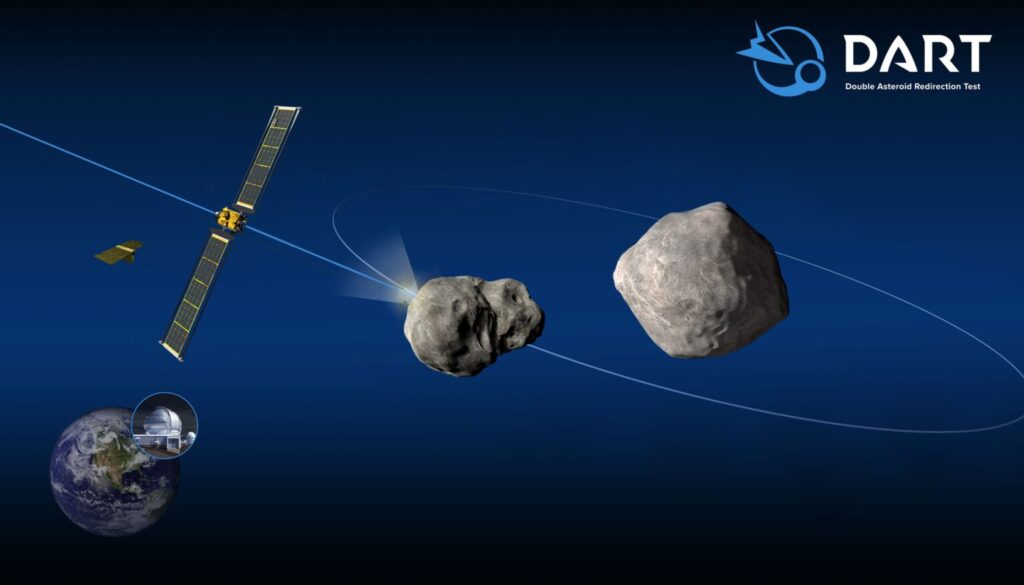NASA’s first planetary defense mission
The very first planetary defense mission in September.

The National Aeronautic and Space Administration launched the very first planetary defense mission in September. The goal of the mission was to determine if a rocket from Earthcould reach the speed and power necessary to throw a large asteroid off of its current orbitalpath.
The Dual Asteroid Relocation Test (DART) missile was launched on Sept. 26, 2022. The test was live-streamed by NASA on the official YouTube channel for everyone to witness. A camera mounted to the missile released the camera during the final stretch of the journey. This was done to ensure that the scientists behind the project had the tools and information necessary to determine if the test was successful, something that can’t be determined for a number of weeks.
The target of the DART missile was the asteroid Dimorphous–the asteroid was the perfect target. It has an already predetermined orbit and the rock is far enough from the earth that the test could be performed safely, even if it failed the first time.
The initial launch was a success, but if it had failed and the spacecraft had failed to reach the intended target, DART would have had enough fuel to attempt the mission again, it would have been unable to do so until late 2024.
Viewers of the missile's impact got to witness the final moments before the impact, seeing rock formations on the surface of the asteroid and the surrounding darkness of space.
Once the asteroid was impacted, the feed cut out due to the destruction of the big money masterpiece of metal mashing into the side of the gigantic space rock. Cheers could be heard as this stretch of the mission was officially completed.
The main purpose of the DART test was to see if Earth could be protected from an oncoming asteroid too big to be broken down on its path to the earth. This scenario has been one of the leading causes of concern for many years. Film and television studios have exploited this fear for years. This fear is not totally unfounded; asteroid impacts with the earth do cause injury and, in serious cases, death to innocent bystanders. It is estimated that roughly 1,000 people annually are harmed by an asteroid impact.
The likelihood of an asteroid hitting someone and causing death is low, but if an asteroid the size of Dimorphos were to crash into the surface of the earth, the results would be catastrophic, one of the reasons a planetary defense mission was deemed necessary.
A mission of this magnitude is not cheap. The DART missile cost 308 million dollars to make and 68 million to launch. The cost is not finalized yet, with another 18 million dollars estimated to actually track the data and find a solid conclusion to the question being presented by the organization.
Earth is safe for now as thousands of Asteroids are monitored to ensure that none of them are on a collision course with the planet. This test was a precaution to ensure that if a mound of rock from out of the neighborhood decides to head towards the people of earth, there would be a potential protective measure in place.
As with every experiment, more tests will need to be completed before any conclusive statements are made about the efficacy of this method. The answer isn’t clear, but it will be one day.




